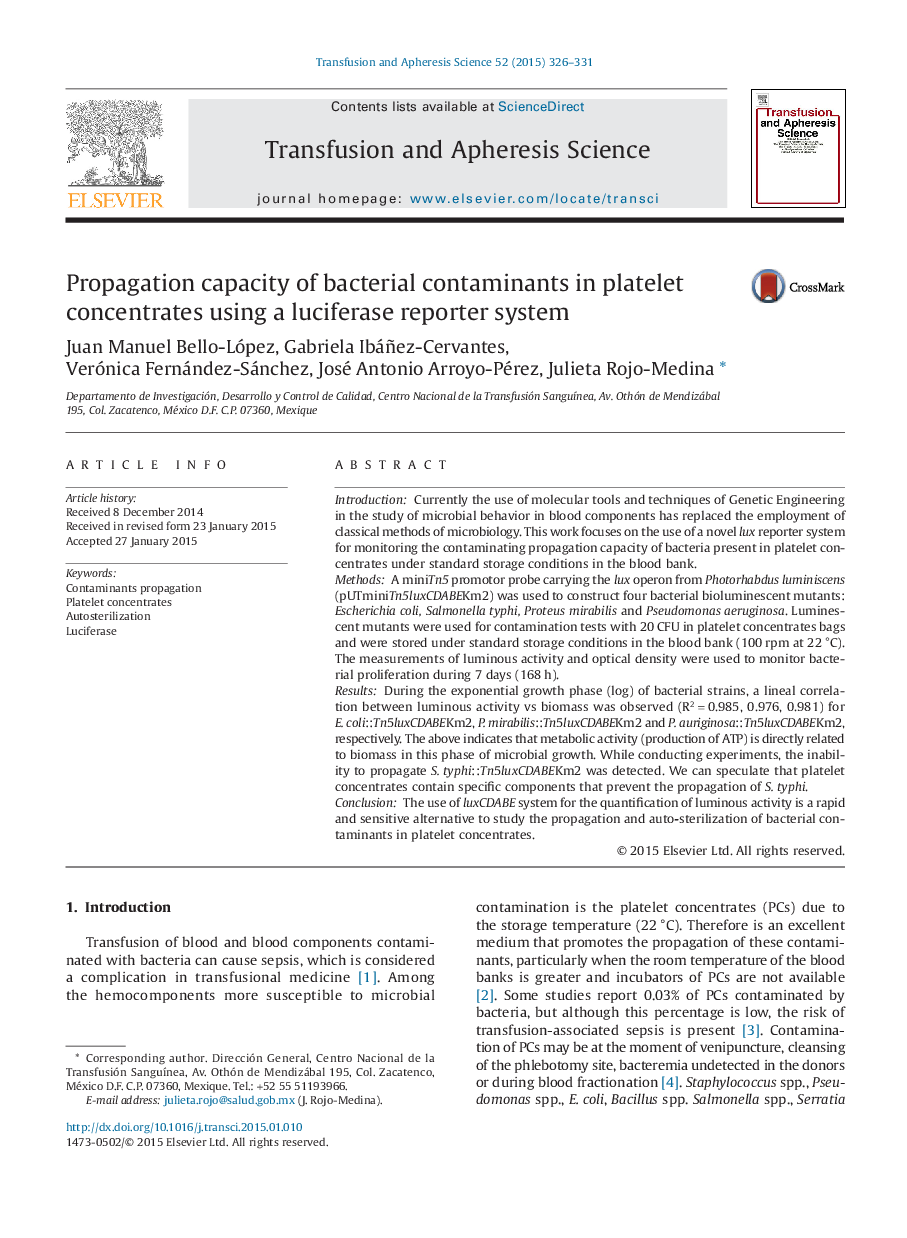| Article ID | Journal | Published Year | Pages | File Type |
|---|---|---|---|---|
| 3334898 | Transfusion and Apheresis Science | 2015 | 6 Pages |
IntroductionCurrently the use of molecular tools and techniques of Genetic Engineering in the study of microbial behavior in blood components has replaced the employment of classical methods of microbiology. This work focuses on the use of a novel lux reporter system for monitoring the contaminating propagation capacity of bacteria present in platelet concentrates under standard storage conditions in the blood bank.MethodsA miniTn5 promotor probe carrying the lux operon from Photorhabdus luminiscens (pUTminiTn5luxCDABEKm2) was used to construct four bacterial bioluminescent mutants: Escherichia coli, Salmonella typhi, Proteus mirabilis and Pseudomonas aeruginosa. Luminescent mutants were used for contamination tests with 20 CFU in platelet concentrates bags and were stored under standard storage conditions in the blood bank (100 rpm at 22 °C). The measurements of luminous activity and optical density were used to monitor bacterial proliferation during 7 days (168 h).ResultsDuring the exponential growth phase (log) of bacterial strains, a lineal correlation between luminous activity vs biomass was observed (R2 = 0.985, 0.976, 0.981) for E. coli::Tn5luxCDABEKm2, P. mirabilis::Tn5luxCDABEKm2 and P. auriginosa::Tn5luxCDABEKm2, respectively. The above indicates that metabolic activity (production of ATP) is directly related to biomass in this phase of microbial growth. While conducting experiments, the inability to propagate S. typhi::Tn5luxCDABEKm2 was detected. We can speculate that platelet concentrates contain specific components that prevent the propagation of S. typhi.ConclusionThe use of luxCDABE system for the quantification of luminous activity is a rapid and sensitive alternative to study the propagation and auto-sterilization of bacterial contaminants in platelet concentrates.
